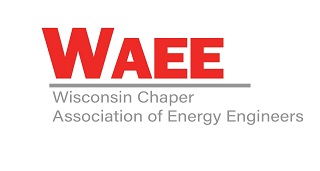
Engineering a microgrid is a complex task, but the team at EnTech Solutions has developed a streamlined process to help our customers meet their energy technical and financial goals.
Understanding Your Energy Load
Designing a microgrid starts with understanding a facility’s current energy loads. Some utilities track this data and can provide it to account owners. If not, installing an energy meter to track your usage over a period of time can be helpful. Even if it is only for a couple of weeks, this data, paired with previous utility bills, would be enough to generate an estimate load profile to start with.
Contact the Utility
The next step is to reach out to the utility to determine any stipulations that must be considered for your design. Will they allow you to push back to the grid any energy your microgrid generates that is not used? If they will, will you receive financial credit for this energy? The rules and regulations can influence what distributed energy resources (DERs) are included in the design, how they are sized and the utility rate structure that will affect your system.
Define the End Goals
What is driving you to install a microgrid? The three most common organizational goals we see are:
- Financial – saving money by lowering or avoiding utility costs.
- Resilience – the ability to support your electrical loads even when the utility is not available.
- Sustainability – a desire to reduce negative impacts on the planet.
Any microgrid will result in achieving some combination of these three goals, so understanding their prioritization will help drive the design. For example, if your facility is plagued by utility outages, then the ability to continue to run your processes during a utility outage may be more advantageous than saving money on energy costs. In this situation, you will want to have dispatchable resources such as generators, microturbines or batteries that are able to support your entire facility through an outage. In comparison, if your overall goal is sustainability or to reduce your carbon footprint, then your renewable resources will be maximized, and the power capacity of the dispatchable resources could be reduced.
Identify Distributed Energy Resources
After we have defined the energy load and the driver behind installing the microgrid, the next step is to identify what distributed energy resources can be added to help achieve the desired goals. Typically the process is started with natural resources like solar and wind. Is there a large open rooftop or an empty field adjacent to your facility that is available to install a solar array or a wind turbine generator? If so, we would use simulation tools to estimate both how much energy these resources will generate and when that generation will occur. The wind isn’t always blowing and the sun isn’t always shining, so to fill in the gaps we would incorporate resources like generators and batteries that will also take some space.
Model the System
The last step is to take all the data that we have listed above and put together a system model. At EnTech, we use our proprietary modeling tool, Energy DNA™, to bring all the data together. Energy DNA will enable us to compare the facility load data to the generation data from the wind and solar models. We can model adding a generator to target demand charges, or batteries to capture excess generation that exceeds the load. The outputs from the model are a bill of materials for the microgrid, a new utility profile and a financial impact analysis. Once we have the data, we can review multiple configurations to find the one that meets the goals that have been defined for the project. The number of required iterations will depend on the complexity of the project.
There are many reasons to consider a microgrid for your energy needs. For additional information or to work with EnTech Solutions to discuss a microgrid for your facility, contact us today.
Thank you for checking out the EnTech Solutions blog. To stay up to date with technologies, developments and trends about clean energy, please subscribe.








